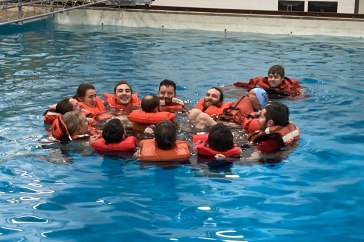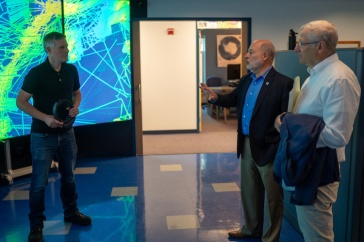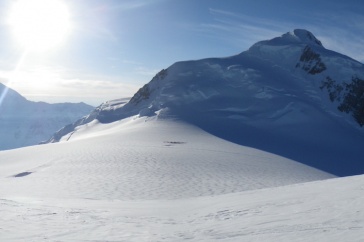
Leaving your comfort zone and jumping into a whole new experience can be nerve-wracking. But for the nine undergraduates who traveled from the mid-Atlantic to take part in an intensive geoscience research program this summer at UNH, they emerged from this experience with newfound confidence and an interest in what they studied.
From the Seacoast salt marshes to the laboratories at UNH, the nine students packed a lot of science and learning into the four-week program, dubbed CLOSES-GAP (for Collaborative Link to Ocean Science and Earth Science Graduate Academic Programs). For most of those undergrads, CLOSES-GAP was chockfull of first-time experiences — boat rides, field work and simply being far away from home for the first time — which ultimately made it that much more fulfilling for them.

With funding provided by the National Science Foundation, CLOSES-GAP provides an opportunity for undergraduates at three minority-serving institutions — Rutgers University - Newark, the University of Maryland – Eastern Shore, and Delaware State University — to wade into marine and Earth sciences and ignite their passion for research. This year’s program was the first of three, and Varner aims to recruit new students each subsequent year from those same institutions.
“The goal of the program is to recruit students from different backgrounds and help diversify the field of geosciences, which is notoriously lacking in diversity,” says Ruth Varner, UNH professor of geosciences who co-leads CLOSES-GAP with Tom Lippmann, UNH associate professor of oceanography, Julie Bryce, interim director for the UNH Leitzel Center and Florencia Fahnestock, a research scientist in Earth sciences. UNH is uniquely poised to host such a program because, as Varner explains, “We have a lot of expertise in the geosciences here at UNH, and we’re located relatively close to the water.”
Several UNH undergraduate and graduate students volunteered to share their scientific expertise to guide the CLOSES-GAP students on their sampling, data acquisition and interpretation.
After the first week of collecting sediment cores from salt marshes around the Seacoast and in Great Bay, the visiting students spent the next few weeks analyzing the samples, learning a new statistics program, and summarizing the results in a scientific poster they presented to UNH faculty, staff and students. Their chosen research topics ranged from mercury concentrations in the sediment to methane in the bay versus in wetlands along the coast. That's a tall order for any undergraduate, as those skills are not typically taught in most classrooms, Lippmann says, but all nine successfully rose to the challenge.
“It was a super rewarding experience to see the students transition from having very little experience collecting and analyzing data to then confidently present their research and engage with UNH faculty in such a short time span,” he adds.

The students acknowledged that although the program was not always easy, it was certainly thought-provoking and gratifying.
“The most interesting part for me was getting down and dirty in the field, it was a lot of fun,” says CLOSES-GAP participant Julianna Gutierrez, a junior majoring in agriscience education at Delaware State University. “The most challenging part had to be creating the research poster at the end, we had so much information, and figuring out how to portray our findings deemed to be a challenge. But it all worked out at the end, and I was satisfied with my work,” she says.
Varner says although she hopes some of the students will consider attending graduate school, the real point is simply to expose them to new topics and help them learn about research projects.
Rhyan Knight, a junior majoring in environmental science at the University of Maryland – Eastern Shore, says the CLOSES-GAP program strengthened her resolve to attend graduate school and pursue a career in the geosciences. “The program helped me narrow down some choices to see what it is I want to do,” she says.
The nine students will be back for the UNH Undergraduate Research Conference (URC) next spring, where they’ll present their findings to the larger science community. “It was a crazy fast month for us and for the students,” Bryce says, “but we all learned a lot and can’t wait to see our first cohort back at the URC and then welcome our next CLOSES-GAP group in May of 2020.”
The Institute for the Study of Earth, Oceans, and Space (EOS) is UNH’s largest research enterprise, comprising six centers with a focus on interdisciplinary, high-impact research on Earth and climate systems, space science, the marine environment, seafloor mapping, and environmental acoustics. With more than $43 million in external funding secured annually, EOS fosters an intellectual and scientific environment that advances visionary scholarship and leadership in world-class research and graduate education.
-
Written By:
Rebecca Irelan | Institute for the Study of Earth, Oceans, and Space | rebecca.irelan@unh.edu | 603-862-0990




















































